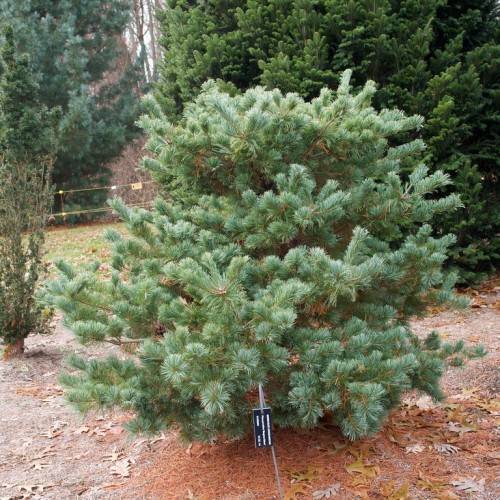
Japanese white pine
Pinus parviflora 'Bergman'
Cycle:
Perennial
Watering:
Average
Hardiness Zone:
5 - 7
Flowers:
Flowers In Spring
Sun:
Full sun
Soil:
Well-drained
Cones:
Yes
Leaf:
Yes
Growth Rate:
High
Maintenance:
Moderate
Drought Tolerant:
Yes
Salt Tolerant:
Yes
Care Level:
Medium
watering
Japanese white pine needs to be watered twice a week, or whenever the top 2-3 inches of soil feels dry. Make sure to water slowly and deeply, allowing the water to saturate the first foot of soil. During the summer months, water a bit more often, especially if the area is particularly sunny or windy. Avoid over-watering, as the roots can become saturated and may be prone to rot and other diseases. During the winter months, water less frequently, allowing the soil to dry out between waterings.
sunlight
Japanese white pine (Pinus parviflora 'Bergman') needs full sunlight for at least 6 hours a day to ensure it grows and develops properly. Plants in shady areas can struggle to photosynthesize properly, resulting in spindly growth. However, some summer afternoon shade may be necessary in hot climates in order to prevent scorching of the foliage.
pruning
Japanese white pine is a slow-growing plant species that requires little pruning, but the following guidelines should be followed: Pruning should be done during late winter or early spring, before the new growth begins. Pruning should be limited to removing any dead, diseased, or damaged branches. Additionally, the dead inner foliage should be removed to improve the shape and density of the tree. Avoid pruning too close to the main trunk and avoid pruning more than about 1-third of the tree’s growth in any single year. Japanese white pine has a tendency to form a bushy shape and it is best to prune only the top portion of the tree to maintain desired shape. It is important to use sharp pruning tools and make clean cuts to avoid any diseases and stress to the plant.
